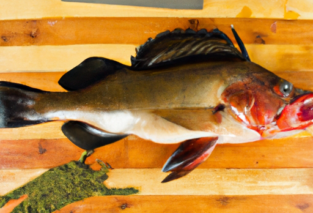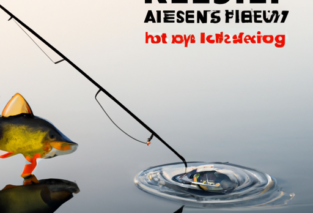Are you curious about whether it’s possible to go ice fishing without a shelter? Well, look no further! In this article, we will explore the essential tips and techniques to make your ice fishing experience a success, even without a shelter. From choosing the right equipment to staying warm and comfortable, we’ve got you covered. So, grab your fishing gear and get ready to learn how to catch fish on the ice, no shelter required!

Choosing the Right Location for Ice Fishing
Ice fishing is a popular winter activity that requires careful consideration when choosing the right location. Researching ice conditions, considering fish habitats, checking local regulations, and seeking advice from local fishermen can contribute to a successful ice fishing outing.
Researching Ice Conditions
Before venturing out onto the ice, it is important to research ice conditions in the area you plan to fish. This includes checking the thickness and stability of the ice. Ice thickness should be at least four inches for walking and six to eight inches for fishing. In addition, look for signs of cracks, unstable areas, or recent ice movement, as these can be indicators of unsafe conditions. Local fishing forums and ice condition reports can provide valuable information on the current state of the ice.
Considering Fish Habitats
Understanding the fish habitats in the area you intend to fish is crucial for a fruitful ice fishing experience. Different fish species have specific preferences when it comes to water depth, structure, and temperature. Research the species you are targeting and find out where they tend to congregate during the winter months. Fish tend to seek out areas with structures such as drop-offs, weed beds, or submerged trees. Using a fish finder or consulting with local experts can help identify these productive fishing spots.
Checking Local Regulations
Before heading out onto the ice, make sure to familiarize yourself with the local fishing regulations. Each area may have specific rules and restrictions regarding ice fishing, such as size and bag limits, bait restrictions, and licensing requirements. It is important to adhere to these regulations to protect the fish population and ensure a sustainable fishing experience. Local fish and game agencies can provide comprehensive information on the specific regulations in your area.
Seeking Advice from Local Fishermen
One of the best resources for finding the right location for ice fishing is the knowledge and experience of local fishermen. They have firsthand experience and insights into the best fishing spots, ice conditions, and fish behavior in the area. Strike up a friendly conversation with local anglers, join online fishing communities, or visit local bait and tackle shops to gather valuable information. These connections can provide guidance on where to go and increase your chances of a successful ice fishing trip.
Preparing Essential Gear for Ice Fishing
Proper gear preparation is crucial for a successful ice fishing experience. Having the right equipment ensures that you are well-equipped to catch fish and stay safe on the ice. The essential gear needed for ice fishing includes an ice fishing rod and reel, ice fishing line, ice fishing lures, ice fishing tip-ups, ice auger, ice scoop, ice skimmer, and ice safety picks.
Ice Fishing Rod and Reel
An ice fishing rod and reel differ from their open-water counterparts. Ice fishing rods are shorter, usually around 24-36 inches in length, to allow for precise control and maneuverability in the confined space of an ice fishing hole. Ice fishing reels are designed to withstand the extreme cold temperatures and have a smooth drag system for fighting fish.
Ice Fishing Line
Choosing the right ice fishing line is essential for ice fishing success. Monofilament or fluorocarbon lines are commonly used for ice fishing due to their low visibility and high sensitivity. It is advisable to use a line with a test strength appropriate for the size of fish you are targeting. Thinner lines with higher test strengths are ideal for targeting larger fish species.
Ice Fishing Lures
Ice fishing lures come in a wide variety of shapes, sizes, and colors. Jigs, spoons, and soft plastics are popular choices among ice anglers. The color and size of the lure should be selected based on the fish species you are targeting and the prevailing water conditions. Experimenting with different lures and techniques can help determine what works best on a given day.
Ice Fishing Tip-Ups
Ice fishing tip-ups are a valuable tool for anglers who want to fish multiple lines simultaneously. These devices are designed to suspend bait at a desired depth while signaling when a fish takes the bait. Tip-ups come in various styles, including wooden, plastic, and electric models. It is important to check local regulations regarding the number of lines allowed per angler.
Ice Auger
An ice auger is an essential tool for drilling holes in the ice. There are manual and gas-powered augers available, each with its own advantages. Manual augers are lightweight and require physical effort to drill the holes, while gas-powered augers offer convenience and speed. The size of the auger blade should be chosen based on the desired hole diameter.
Ice Scoop
An ice scoop is a handy tool for removing ice shavings and slush from the holes. This ensures clear visibility and prevents the line from tangling or freezing in the water. Choose a scoop with a long handle to reach deep into the hole without bending over.
Ice Skimmer
An ice skimmer is used to remove any remaining ice fragments or debris from the water surface. This is important for maintaining a clean and ice-free fishing hole. A lightweight and durable skimmer with a fine mesh net is ideal for efficient removal.
Ice Safety Picks
Ice safety picks are an essential safety tool that should always be carried when ice fishing. These small handheld devices feature sharp metal picks that can be used to grip the ice in case of an emergency. They provide a means of self-rescue if you were to fall through the ice. Keep the picks accessible, such as wearing them around your neck or securing them to your clothing.
By preparing essential gear specific to ice fishing, you’ll be well-equipped to tackle the challenges and make the most of your time on the ice.
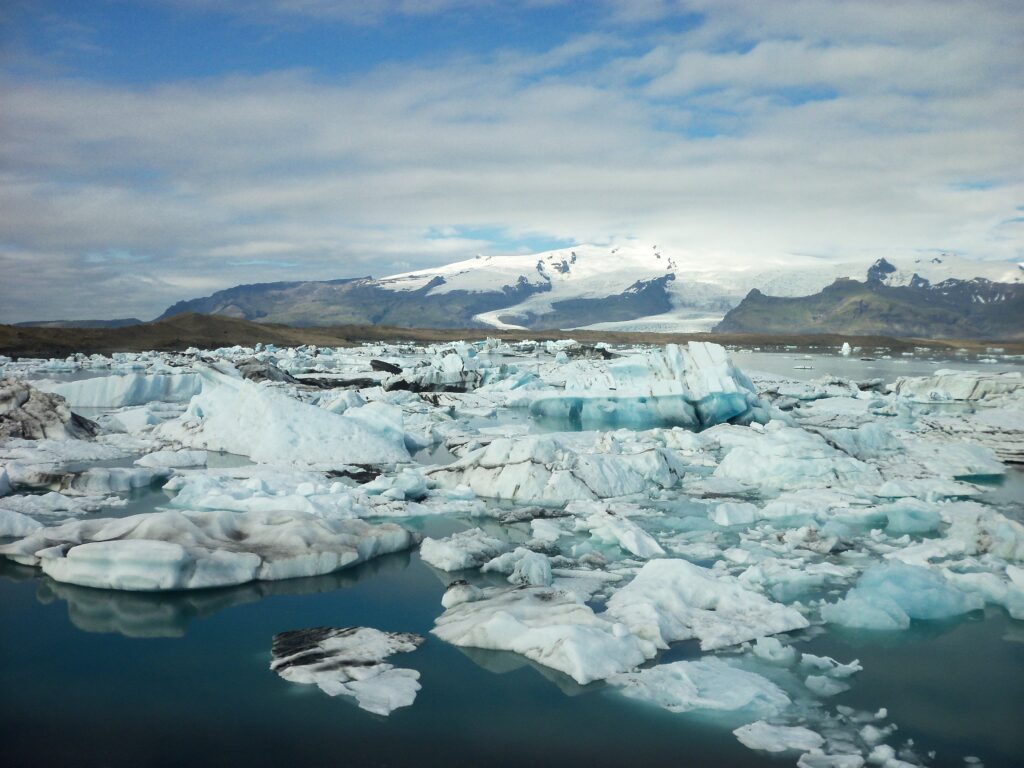
Dressing Appropriately for Ice Fishing
Dressing appropriately for ice fishing is crucial to stay warm, comfortable, and protected from the harsh winter conditions. Layering clothing, wearing insulated boots, warm socks, waterproof gloves, an insulated hat, face mask, and using hand and foot warmers are key considerations when getting dressed for ice fishing.
Layering Clothing
Layering clothing is essential for regulating body temperature in varying weather conditions. Start with a moisture-wicking base layer to keep sweat away from the skin. This layer should be followed by an insulating mid-layer such as a fleece or down jacket to provide warmth. Finally, top it off with a waterproof and windproof outer layer to protect against the elements.
Insulated Boots
Insulated boots are a must-have for staying warm and comfortable on the ice. Look for boots with thick insulation and a waterproof exterior to keep your feet dry and warm. Ensure that the boots have good traction to prevent slipping on the icy surface.
Warm Socks
Wearing warm socks is essential to keep your feet cozy and help retain heat. Wool or synthetic materials are recommended for their moisture-wicking properties and insulation. Avoid cotton socks as they tend to retain moisture, which can make your feet feel cold and uncomfortable.
Waterproof Gloves
Keeping your hands dry and warm is crucial for an enjoyable ice fishing experience. Invest in a pair of waterproof gloves or mittens that provide insulation and dexterity. Consider gloves with removable liners, so you can adjust the level of warmth as needed.
Insulated Hat
A significant amount of heat is lost through the head, so wearing an insulated hat is essential to retain warmth. Choose a hat that covers the ears and is made of insulating materials such as fleece or wool. A hat with a brim can also protect your face from wind and snow.
Face Mask
A face mask provides an extra layer of protection against the cold winds and biting temperatures. Look for a mask that covers your nose, mouth, and cheeks without obstructing your vision. Opt for a breathable material that allows for easy airflow while preventing frostbite.
Hand and Foot Warmers
Hand and foot warmers can provide an additional source of heat during extremely cold conditions. These small disposable packets can be inserted into gloves, boots, or pockets to provide long-lasting warmth. They are a convenient and effective way to keep your extremities comfortable throughout your ice fishing adventure.
By dressing appropriately for the cold winter conditions, you can focus on enjoying the fishing experience rather than battling the elements. Proper clothing and accessories will keep you warm, dry, and safe throughout your time on the ice.
Understanding Ice Safety
Ice safety is paramount when participating in ice fishing. Understanding how to check ice thickness, identifying safe ice conditions, avoiding unsafe ice, using safety equipment, and fishing with a partner are crucial aspects of ice safety.
Checking Ice Thickness
Before venturing onto the ice, it is essential to check the ice thickness to ensure it is safe to walk or fish on. Ice should be at least four inches thick for walking and six to eight inches thick for small groups or ice fishing. Carry an ice chisel or an ice auger to test the ice thickness at regular intervals as you venture further onto the frozen water.
Identifying Safe Ice Conditions
Safe ice conditions can be identified by observing its appearance and structure. Clear blue ice is generally stronger than white or opaque ice. Listen for a solid, uniform sound when tapping the ice with a hard object, such as a metal ice scoop. Cracks, slushy areas, or flowing water indicate potentially weak spots in the ice.
Avoiding Unsafe Ice
It is crucial to exercise caution and avoid unsafe ice conditions. Stay away from areas with moving water, such as inlets, outlets, or areas near rivers or streams. Avoid ice that appears discolored or has visible cracks. Beware of ice around partially submerged objects like logs or rocks, as they can weaken the ice in those areas.
Using Safety Equipment
Carrying safety equipment is essential for emergencies and self-rescue situations. Ice safety picks, which are sharp, handheld devices, should be worn and easily accessible. They can be used to grip the ice and pull yourself out if you fall through. Additionally, wearing a life jacket can provide additional buoyancy and increase your chances of survival in case of an accident.
Fishing with a Partner
Fishing with a partner is highly recommended for enhanced safety. Having a companion can provide immediate assistance in case of an emergency. They can also help check the ice conditions, share the workload, and provide an enjoyable ice fishing experience. Remember to communicate and establish a plan in case of an emergency.
By understanding ice safety measures, you can minimize the risks associated with ice fishing and ensure a safe and enjoyable experience on the frozen water.
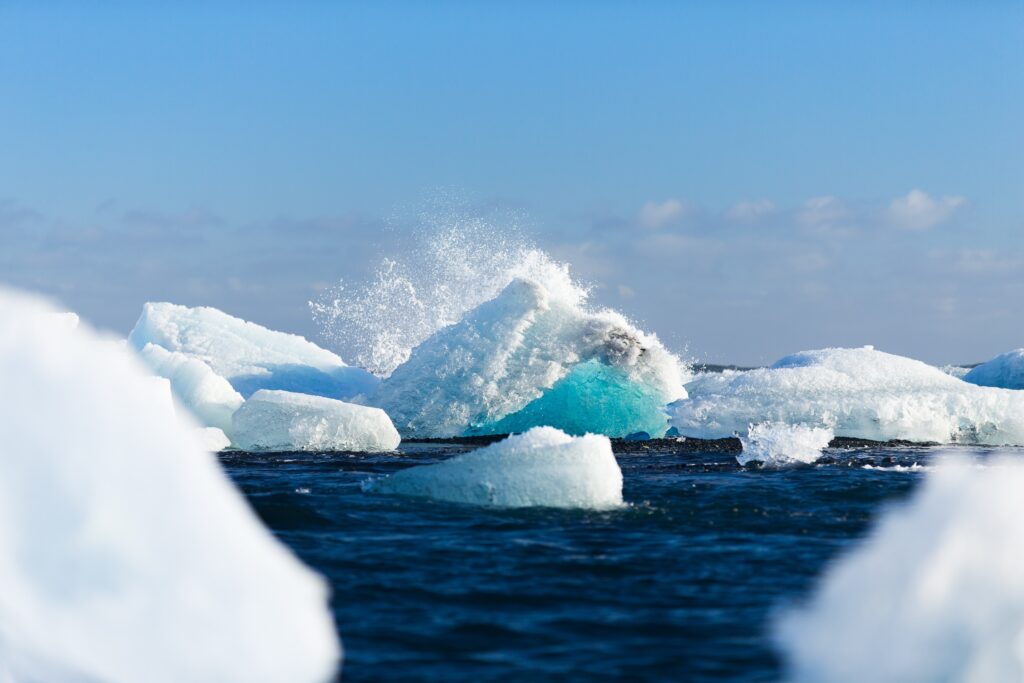
Setting Up a Successful Ice Fishing Spot
Setting up a successful ice fishing spot involves several key steps that contribute to a productive and enjoyable fishing experience. These steps include clearing snow from the surface, drilling fishing holes, removing ice shavings, managing the fishing lines, and using tip-ups effectively.
Clearing Snow from the Surface
Before starting to fish, it is important to clear the snow from the ice surface. Snow covering the ice can inhibit sunlight penetration, reducing the chances of attracting fish to your fishing hole. Use a snow shovel or a specialized snow-clearing tool to remove the snow, exposing the bare ice beneath.
Drilling Fishing Holes
Drilling fishing holes is the next crucial step in setting up your ice fishing spot. Use an ice auger or an ice drill to create holes of the desired diameter. The number of holes you drill depends on personal preference, the fishing regulations in your area, and the type of fish you are targeting. It is recommended to space the holes apart to cover a larger area and increase your chances of success.
Removing Ice Shavings
After drilling the fishing holes, it is important to remove the ice shavings or slush that accumulates around the hole. This can be done using an ice scoop or an ice skimmer. Clearing the ice shavings allows for better visibility into the water and ensures that the line does not become tangled or obstructed.
Managing the Fishing Lines
Properly managing the fishing lines is crucial for a successful ice fishing experience. Keep the lines organized and tangle-free by using line management tools such as ice line clips or line spools. These tools prevent tangling and make it easy to maneuver the lines when determining the depth or changing bait.
Using Tip-Ups Effectively
Tip-ups are valuable tools for managing multiple lines and increasing your chances of catching fish. When using tip-ups, position them strategically around your fishing area, preferably covering different depths or areas of interest. Ensure that the lines are properly baited and set up according to the regulations in your area. Monitor the tip-ups frequently for any movement or signs of a fish taking the bait.
By following these steps, you can create a productive ice fishing spot and increase your chances of catching fish in a comfortable and organized setup.
Choosing the Right Ice Fishing Technique
Choosing the right ice fishing technique is essential to effectively target and catch fish beneath the ice. The choice of technique depends on the fish species you are targeting, the prevailing conditions, and personal preference. Some popular ice fishing techniques include jigging, deadsticking, trolling, float fishing, and sight fishing.
Jigging
Jigging is one of the most common and versatile ice fishing techniques. It involves vertically moving the baited lure up and down in the water column to attract fish. Jigging lures are available in various shapes, sizes, and colors. Experiment with different jigging motions, such as a steady lift and drop, or a more erratic jigging action, to entice fish into striking.
Deadsticking
Deadsticking is a passive ice fishing technique that involves leaving the baited line suspended in the water without any movement. This technique is particularly effective for targeting finicky or cautious fish. Use a sensitive rod with a spring bobber or a small strike indicator to detect subtle bites. Patience is key when deadsticking, as the fish may take a while to bite.
Trolling
Trolling is an effective technique for covering a larger area of water and actively searching for fish. It involves using a sled or a portable shelter to transport your gear while towing a baited line behind you. Trolling can be done manually or using a motorized ice auger or a snowmobile to cover more ground. It is important to check local regulations regarding the use of motorized vehicles on the ice.
Float Fishing
Float fishing, also known as suspending, involves suspending a baited line at a specific depth using a float or a bobber. This technique is effective for targeting fish that are suspended at a certain depth or feeding near the surface. Choose a float that is sensitive enough to detect even the slightest movement, indicating a fish bite.
Sight Fishing
Sight fishing is a technique that involves spotting fish directly beneath the ice and enticing them to bite. This technique is popular for targeting species such as panfish or trout. Clear ice, underwater cameras, and polarized sunglasses are essential tools for sight fishing. Observe the fish’s behavior and adjust your bait or presentation accordingly to elicit a strike.
Choosing the right ice fishing technique depends on various factors, including the fish species, ice conditions, and personal preference. Experimenting with different techniques and being adaptable will increase your chances of success on the ice.
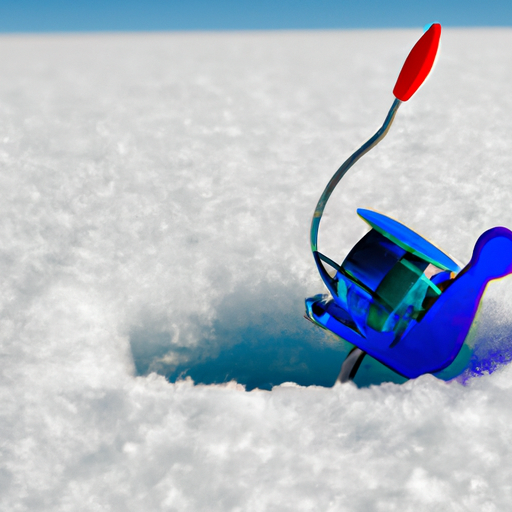
Selecting the Best Bait and Lures for Ice Fishing
Selecting the best bait and lures is crucial for enticing fish to bite while ice fishing. Live bait options and artificial lures can both be effective, depending on the target fish species, local regulations, and personal preference. Factors such as color, size, and presentation should also be considered.
Live Bait Options
Live bait can be a highly effective choice for ice fishing. Popular live bait options include minnows, waxworms, mealworms, and maggots. It is important to check local fishing regulations regarding the use of live bait, as some areas may have restrictions or specific species allowed. Live bait can be presented on a hook, a jig, or used in conjunction with a tip-up.
Artificial Lures
Artificial lures are a versatile and popular choice for ice fishing. Jigs, spoons, soft plastics, and blade baits are among the many options available. These lures come in a variety of colors, shapes, and sizes, allowing anglers to imitate different prey species and attract fish. Experiment with different lures and presentations to find what works best for the fish species you are targeting and the prevailing conditions.
Choosing the Right Color and Size
The choice of lure color and size can greatly influence the success of your ice fishing expedition. Color selection should be based on the prevailing water and lighting conditions. In clear water, natural colors such as white, silver, and black can be effective. In stained or murky water, brighter colors and contrasting patterns can help attract fish. Size selection should match the prey species the target fish typically feed on. Smaller lures are generally effective for panfish, while larger lures are often used for targeting larger game fish.
By selecting the right bait and lures for ice fishing, you can increase your chances of attracting fish and enticing them to bite. It is important to experiment with different options and be adaptable to the preferences of the fish on a given day.
Reading the Ice and Understanding Fish Behavior
Reading the ice and understanding fish behavior are vital skills for successful ice fishing. Identifying ice fishing hotspots, locating drop-offs and structures, identifying fish movements, and analyzing underwater features all contribute to effectively targeting fish beneath the ice.
Identifying Ice Fishing Hotspots
Ice fishing hotspots are areas that consistently produce good catches and attract fish. Learning to identify these spots can significantly increase your chances of success. Look for areas with a history of holding fish, such as rocky points, submerged weed beds, or areas with noticeable drop-offs. Additionally, areas where the ice transitions from shallow to deeper water can often concentrate fish.
Locating Drop-offs and Structures
Drop-offs and structures are natural features that fish tend to congregate around during the winter months. A drop-off is a sudden change in water depth and can occur near underwater cliffs, submerged islands, or points. Structures, such as fallen trees, submerged vegetation, or rocky outcrops, provide cover and food sources for fish. Locating these features on a topographical map or using a fish finder can help pinpoint productive fishing areas.
Identifying Fish Movements
Understanding fish movements is crucial for successfully targeting them under the ice. Fish tend to follow certain patterns during different times of the day or season. They may move in schools, travel along specific depth contours, or patrol certain areas in search of food. Observing fish movements through an underwater camera or talking to local fishermen can provide valuable insight into their behavior.
Analyzing Underwater Features
Analyzing underwater features can give valuable hints about fish behavior and potential feeding areas. Look for areas with submerged vegetation, which can serve as cover and attract smaller baitfish. Cracks or crevices in the ice may indicate spring-fed areas or upwelling currents, which can attract fish. Analyzing the appearance of the ice, such as variations in thickness or clarity, can also provide clues about underwater topography and potential fishing spots.
By reading the ice and understanding fish behavior, you can effectively target fish and increase your chances of a successful ice fishing outing. Being observant, adaptable, and knowledgeable about the underwater environment will enhance your ice fishing experience.
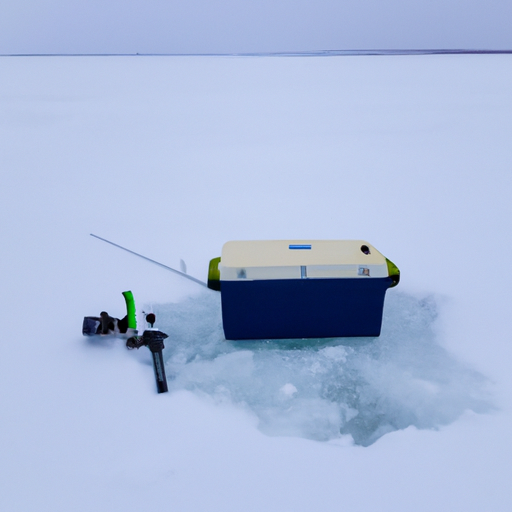
Patience and Persistence in Ice Fishing
Patience and persistence are key virtues to master when it comes to ice fishing. Staying focused and alert, understanding fish patterns, being patient with bites, and modifying techniques and lures contribute to a successful and rewarding ice fishing experience.
Staying Focused and Alert
Ice fishing requires a level of focus and alertness despite the calm and serene surroundings. It is important to maintain constant vigilance for any signs of fish activity, such as movement, fish marks on the fish finder, or subtle bites. Pay attention to your surroundings and stay prepared to react quickly when a fish strikes.
Understanding Fish Patterns
Understanding fish patterns can greatly enhance your chances of catching fish beneath the ice. Fish tend to follow specific feeding habits and movement patterns during different times of the day or season. Researching the target fish species and talking to experienced anglers can provide valuable information about when and where to find fish.
Being Patient with Bites
Fish bites can be subtle and require patience to detect. It is common for fish to be more sluggish in cold water, resulting in lighter bites. Avoid setting the hook too quickly and give the fish ample time to fully commit to taking the bait. Learn to differentiate between nibbles, taps, or gentle tugs that signal fish interest.
Modifying Techniques and Lures
Modifying techniques and lures is often necessary to entice fish into biting. If the fish are not responding to a particular technique, try varying the jigging action, speed, or depth. Experiment with different lure colors, sizes, or even switching from live bait to artificial lures. Being adaptable and willing to try new approaches can turn a slow day into a successful one.
By practicing patience and persistence, you can develop the ability to adapt to changing conditions and increase your chances of success on the ice. Embrace the slower pace of ice fishing and enjoy the process as much as the catch.
Safety Measures and Emergency Preparedness
Practicing safety measures and being prepared for emergencies is of utmost importance when participating in ice fishing. Carrying safety equipment, being aware of hypothermia risks, knowing basic first aid, and preparing for ice breakage or accidents are crucial aspects of ensuring a safe and enjoyable ice fishing trip.
Carrying Safety Equipment
Carrying safety equipment is essential for emergencies and potential self-rescue situations. Ice safety picks should be worn and easily accessible. Additionally, carrying a throw rope or a throw bag can be helpful for aiding others in case of an ice breakage or accident. A first aid kit, a whistle, and a cell phone in a waterproof case are also essential items to have on hand.
Being Aware of Hypothermia Risks
Hypothermia is a serious risk when participating in ice fishing. It occurs when the body loses heat faster than it can produce, resulting in dangerously low body temperature. To minimize the risk of hypothermia, dress in layers, stay dry, and insulate yourself from the cold ice surface by using a chair or a portable thermal mat. Recognize the symptoms of hypothermia, such as shivering, confusion, loss of coordination, and seek immediate medical attention if necessary.
Knowing Basic First Aid
Having basic first aid knowledge is crucial when participating in any outdoor activity. Be prepared to administer first aid in case of injuries or accidents. Familiarize yourself with basic first aid techniques, such as CPR, treating cuts or wounds, and managing shock. Consider taking a first aid and CPR certification course to enhance your preparedness.
Preparing for Ice Breakage or Accidents
Ice breakage or accidents can occur, even with proper precautions. It is important to be prepared and know what to do in such situations. If you fall through the ice, remain calm and use your ice safety picks to grip the ice and pull yourself out. Avoid trying to stand up immediately, as the ice around you may be unstable. Crawl or roll away from the broken ice and towards solid ice before attempting to stand or walk.
By practicing safety measures and being prepared for emergencies, you can minimize the risks associated with ice fishing and ensure a safe and enjoyable experience for yourself and others. Keep safety at the forefront of your mind and prioritize the well-being of yourself and fellow anglers.



